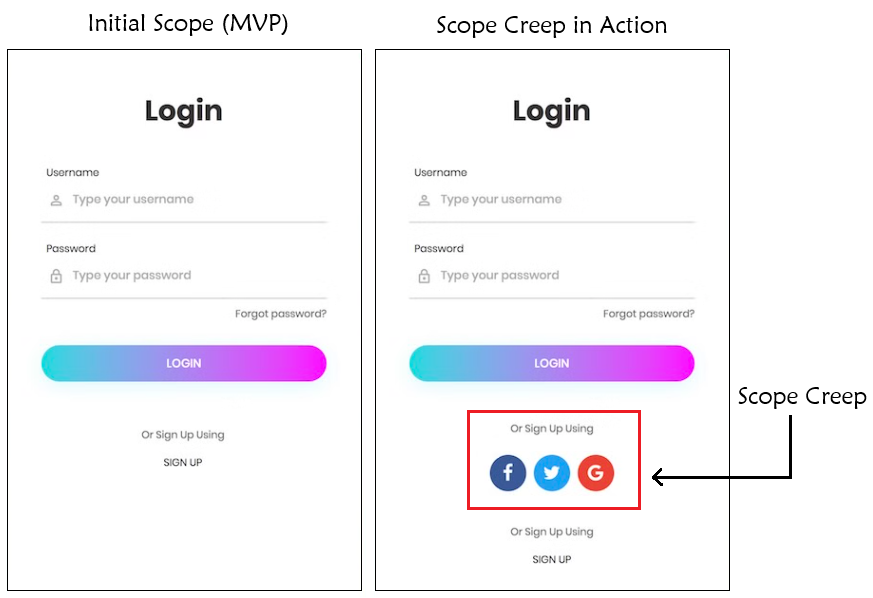In the world of software development, scope creep is a common but often overlooked challenge. It happens when additional features or requirements are added to a project without adjusting the timeline, budget, or resources. This can lead to delayed launches, increased development costs, and a product that’s more complicated than originally planned. In this blog, we’ll break down what scope creep is, how it can disrupt your project’s Minimum Viable Product (MVP), and offer strategies to avoid it.
The Impact of Scope Creep on an MVP
The concept of an MVP (Minimum Viable Product) is to release a simple, functional version of the product that includes only the core features needed to solve the user’s problem or meet their needs. This approach enables early market testing and feedback, helping the development team focus on what matters most before investing in more complex features.
Scope creep can disrupt an MVP’s purpose by:
- Delaying Launch: Additional features take more time to develop, pushing back the release date. This delays the opportunity to gather early feedback from real users, which is crucial for improving the product in future iterations.
- Increasing Development Costs: Each new feature requires extra time and resources. When scope creep isn’t managed, the project budget can balloon, straining financial resources and leading to unexpected costs.
- Overwhelming the MVP: An MVP should be simple and focused. When too many features are added, the product can become cluttered and confusing, detracting from its original purpose and complicating the user experience.
Visual Example of Scope Creep in Action
To illustrate scope creep, let’s look at the image below.

In the Initial Scope (MVP) screen, we see a simple login page with only the essential elements: username and password fields, a login button, and a sign-up option. This screen serves its purpose—allowing users to log in—without extra distractions.
In the Scope Creep in Action screen, social media login options (Facebook, Twitter, and Google) have been added. This might seem like a small addition, but it introduces additional complexities:
- Extra development time to integrate social media APIs.
- More testing to ensure the social login works reliably.
- Additional UI/UX design considerations to fit the new options seamlessly.
These unplanned additions, though well-intentioned, can slow down the project and increase costs. This is a clear example of how scope creep can affect an MVP, transforming a focused product into something more complex than originally planned.
How to Avoid Scope Creep in Your MVP
Managing scope creep is crucial for delivering an MVP on time and within budget. Here are some strategies to keep scope creep under control:
1. Establish a Change Control Process During the Initial Planning Phase
A change control process helps you evaluate any new feature requests that come up during development. When a stakeholder suggests an addition, the change control process allows you to assess its impact on the timeline, budget, and resources before deciding whether to include it. By establishing this process from the start, you can better control changes to the project scope.
2. Understand the MVP’s Goal—to Release a Simple, Testable Version
The MVP’s purpose is to deliver a basic, functional version of the product that can be tested and validated by real users. Keep this goal in mind throughout development. Whenever a new feature is proposed, ask if it aligns with the MVP’s core purpose. If it’s not essential for testing or early adoption, consider saving it for future iterations.
3. Define and Prioritize Core Features, and Set Clear Milestones
Identifying the core features that are essential to the MVP is key to staying focused. Create a prioritized list of features based on user needs and set clear milestones to track progress. With defined milestones, it’s easier to spot when additional features might disrupt the project timeline, allowing you to make informed decisions about what to include.
